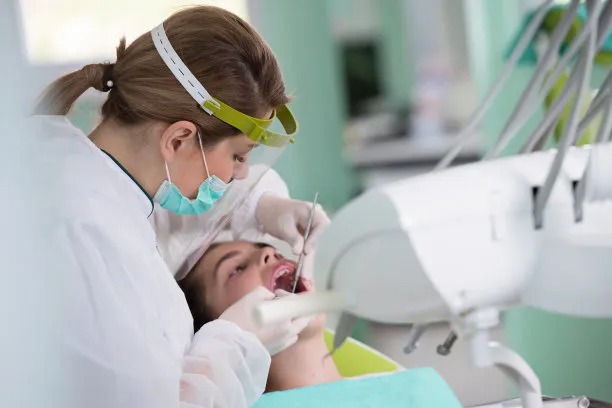Extracting a Tooth Understanding the Process Benefits and Aftercare for a Smooth Recovery
Summary: Tooth extraction is a common dental procedure often performed to address various issues, including severe decay, overcrowding, or gum disease. Understanding the process, its benefits, and effective aftercare can significantly enhance recovery and ensure a smooth experience. This article breaks down the tooth extraction process into four key areas—understanding the procedure, the advantages of extraction, effective pain management, and essential aftercare tips. Each of these sections offers valuable insights to ensure dental health and optimal recovery following an extraction. By providing a step-by-step outline of what to expect, the benefits derived from the procedure, and guidelines for post-operative care, readers will feel more prepared and informed for the journey ahead.
1. Understanding the Tooth Extraction Procedure

The tooth extraction process typically begins with a thorough examination performed by a dentist. During this examination, the dental professional will assess the condition of the tooth through X-rays and visual inspection. Understanding the specific issue, such as decay or gum disease, helps the dentist determine the best course of action.
Once the diagnosis is made, the dentist will discuss the extraction procedure, including the type of anesthesia that will be used. Local anesthesia is often employed to numb the area surrounding the tooth, while sedation might be offered for those who are particularly anxious. This step is crucial for ensuring patient comfort throughout the procedure, which generally lasts between 20 to 40 minutes.
During the extraction, the dentist will use specialized instruments to loosen the tooth from its socket before carefully removing it. In cases where the tooth is impacted, the procedure may involve surgical extraction, which requires making an incision in the gum to access the tooth. Patients can expect some pressure but minimal discomfort during this phase, thanks to the anesthesia.
2. The Benefits of Tooth Extraction
Tooth extraction can provide significant benefits for patients suffering from dental issues. One of the primary advantages is the relief of pain associated with damaged or infected teeth. Extracting a problematic tooth can eliminate constant discomfort, allowing individuals to return to normal activities without the interference of dental pain.
In addition to pain relief, tooth extraction can prevent the spread of infection. When a tooth is severely decayed or infected, it can pose risks not only to surrounding teeth but also to overall health. Removing the affected tooth can stop the progression of disease and help maintain oral hygiene.
Finally, tooth extraction can create space for proper alignment of remaining teeth, especially in crowded conditions. This can be particularly beneficial for individuals undergoing orthodontic treatment, where extra space may facilitate the successful movement of teeth into their desired positions. The extraction can lead to a healthier and more aesthetically pleasing smile.
3. Effective Pain Management After Extraction
After tooth extraction, managing pain effectively is crucial for a smooth recovery. Dentists usually prescribe pain relief medications or recommend over-the-counter options such as ibuprofen or acetaminophen. Following the dentists instructions regarding medication is essential to minimize discomfort.
Ice packs can also be beneficial in the first 24 hours post-extraction. Applying ice to the outside of the cheek where the extraction occurred can help reduce swelling and numb the area, contributing to overall comfort. Alternating the application of heat and cold can also provide relief as swelling decreases.
It’s important for patients to rest adequately after the procedure. Engaging in strenuous activities may increase pain and swelling. Patients should avoid bending over or lifting heavy objects and adhere to recommended dietary guidelines that lean towards soft foods, allowing the extraction site to heal properly.
4. Essential Aftercare Tips for Smooth Recovery
After a tooth extraction, proper aftercare is vital for effective healing. Patients are advised to bite down gently on a gauze pad for 30 to 45 minutes post-procedure to control bleeding. If bleeding continues beyond this period, they should consult with their dentist.
Maintaining oral hygiene is essential, but immediate brushing or rinsing around the extraction site should be avoided for the first 24 hours. After this time, gentle rinsing with warm salt water can help keep the area clean and reduce the risk of infection. Patients should wait at least 48 hours before resuming normal brushing habits, taking care to avoid the extraction socket.
Finally, it’s crucial to follow up with the dentist as recommended. Monitoring the healing process ensures that any complications, such as dry socket or infection, are addressed promptly. If any unusual symptoms arise, such as intense pain or swelling, patients should seek professional guidance immediately.
Summary:
Tooth extraction is a well-structured process that provides numerous benefits, including relief from pain and prevention of further dental complications. Understanding the procedure, managing pain effectively, and following thorough aftercare can significantly improve the recovery experience. By following these guidelines, patients can ensure a smoother transition during the healing process.
This article is compiled by Vickong Dental and the content is for reference only



